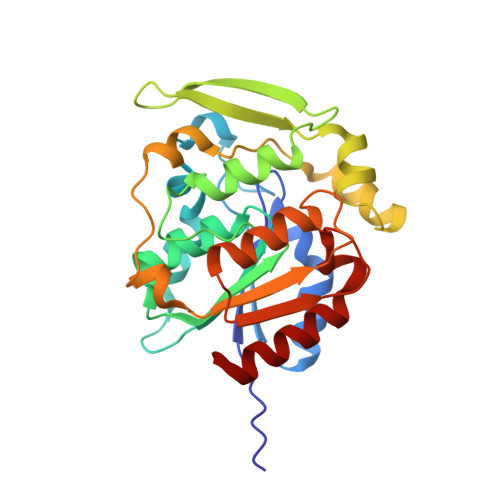Structure Determinants of Substrate Specificity of Hydroxynitrile Lyase from Manihot Esculenta.
Lauble, H., Miehlich, B., Foerster, S., Kobler, C., Wajant, H., Effenberger, F.(2002) Protein Sci 11: 65
- PubMed: 11742123
- DOI: https://doi.org/10.1110/ps.33702
- Primary Citation of Related Structures:
1EB8, 1EB9 - PubMed Abstract:
Tryptophan 128 of hydroxynitrile lyase of Manihot esculenta (MeHNL) covers a significant part of a hydrophobic channel that gives access to the active site of the enzyme. This residue was therefore substituted in the mutant MeHNL-W128A by alanine to study its importance for the substrate specificity of the enzyme. Wild-type MeHNL and MeHNL-W128A showed comparable activity on the natural substrate acetone cyanohydrin (53 and 40 U/mg, respectively). However, the specific activities of MeHNL-W128A for the unnatural substrates mandelonitrile and 4-hydroxymandelonitrile are increased 9-fold and approximately 450-fold, respectively, compared with the wild-type MeHNL. The crystal structure of the MeHNL-W128A substrate-free form at 2.1 A resolution indicates that the W128A substitution has significantly enlarged the active-site channel entrance, and thereby explains the observed changes in substrate specificity for bulky substrates. Surprisingly, the MeHNL-W128A--4-hydroxybenzaldehyde complex structure at 2.1 A resolution shows the presence of two hydroxybenzaldehyde molecules in a sandwich type arrangement in the active site with an additional hydrogen bridge to the reacting center.
Organizational Affiliation:
Institut für Organische Chemie der Universität Stuttgart, D-70569 Stuttgart, Germany. PeterLauble@t-online.de















